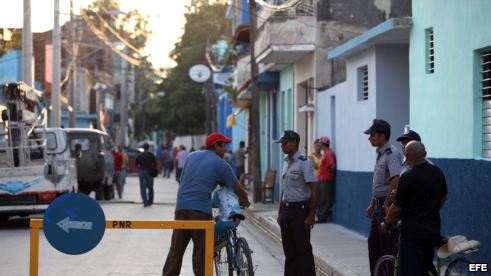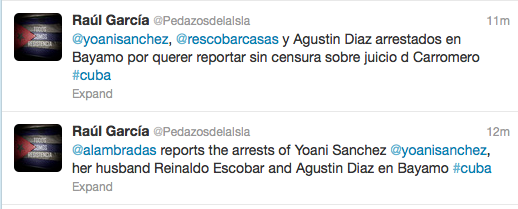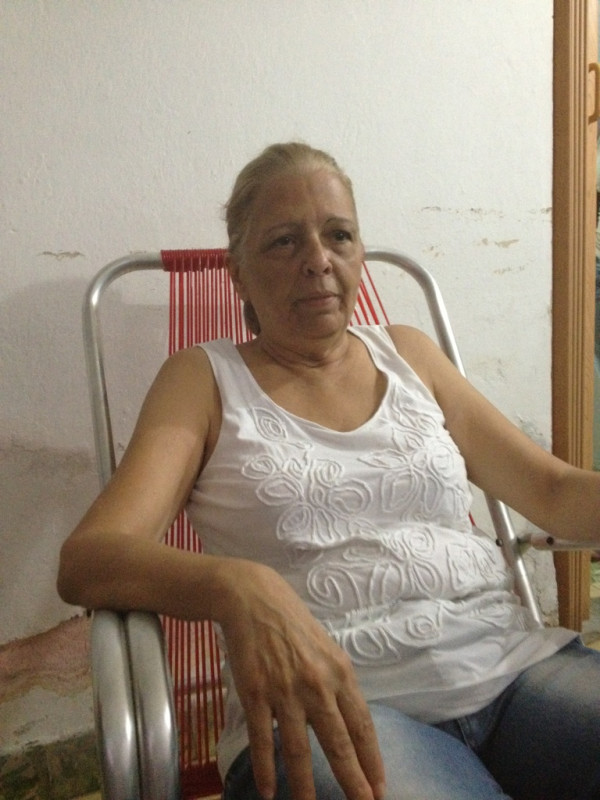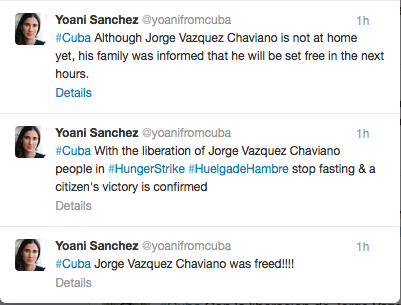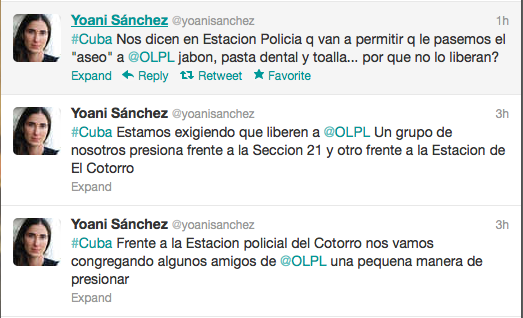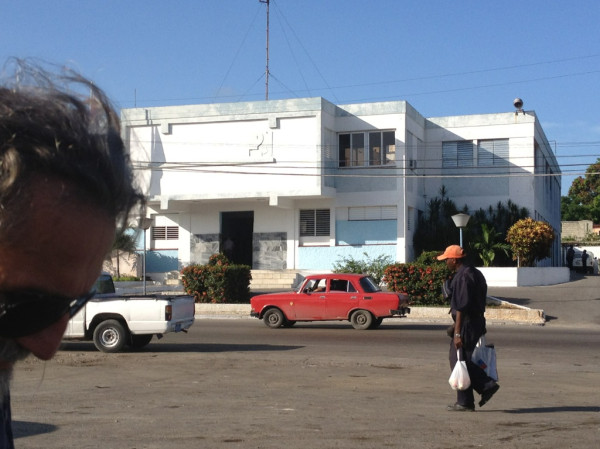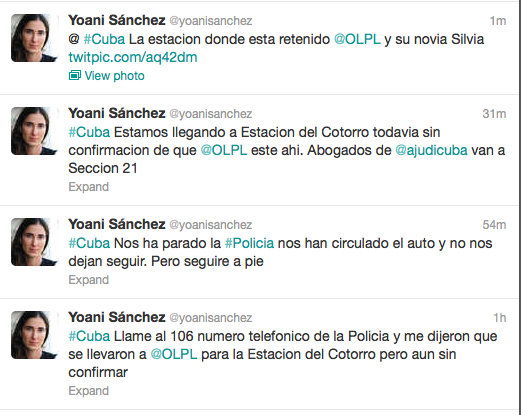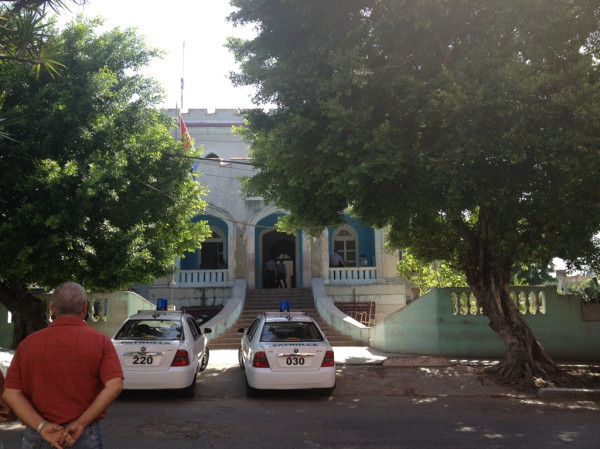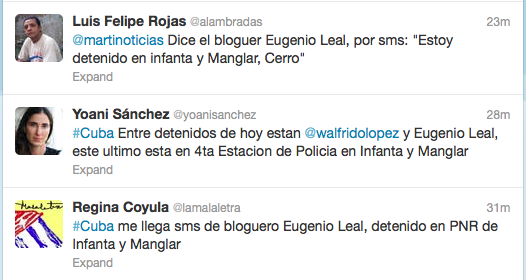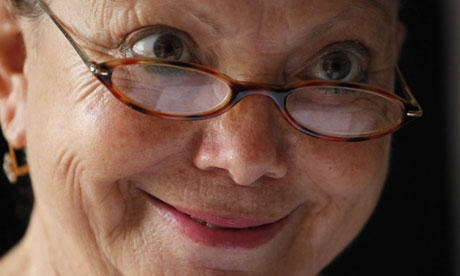
Of short stature, with blue eyes and a firm voice, Laura Pollán was for years one of the most visible faces in Cuba of the Ladies in White. A teacher by profession and a civic activist by choice, she participated in the creation and strengthening of the most important dissident group on the island today.
This October 14 marks the first anniversary of her death, and many are reviewing her legacy and the current state of the movement she helped to found. Twelve months ago the big question was if this women’s group could survive the death of its principal leader, but that question has already been answered.
The current spokeswoman, Berta Soler, tells us that the Ladies in White have grown both in number and in their presence throughout the country. If, initially, the activities organized by the group were confined to Havana, now they also extend to Guantanamo, Santiago de Cuba, Matanzas, Cienfuegos, Villa Clara and Pinar del Rio.
Although she prefers not to share the exact number of women members, it is estimated to exceed 180 in all of Cuba. In her role as spokeswoman, Berta is confident, energetic. But for her, as well, the past year has meant a significant change in her life. On her shoulders, now, rests the responsibility that she seems to carry with ease. She always refers to her predecessor and does so with love and respect.
This Sunday, if they are allowed to gather there, the Ladies in White will make a special pilgrimage around Santa Rita Church as a tribute to Laura Pollán. From the early hours of the morning, at their headquarters in Neptune Street, they will also open the doors to all who wish to pay their respects or sign the memory book for the fallen leader. Already, an altar dressed in white adorns the corner of the little room where she lived and a photo of Laura smiling is surrounded by gladioli.
Since last Friday, traffic on Neptune Street, a major capital arterial, has been blocked off. Government supporters are gathered in front of the Ladies in White headquarters, claiming to be there “to commemorate the 45th anniversary of the death of Ernesto Guevara and 53 years since the disappearance of Camilo Cienfuegos.”
None of them, when asked, made any reference to the women dressed in white whom they could see through the open door of the house at number 963. The volume of music at the event had been annoying the neighbors since early morning. “I don’t know why all the fuss against some peaceful unarmed women?” said a young man, who fled out of fear of reprisals after saying his name. Meanwhile, the conga broadcast through the bullhorns continued to blare in all directions.
Laura Pollán: the woman who jumped beyond her own shadow
When her husband was arrested during the so-called Black Spring of 2003, Laura Pollán’s life experienced a radical change. She rose from anonymity and domestic routine to be at the center of praise from democratizing forces and insults from the official press.
The last Sunday of March in 2003 a group of women dressed in white clothing attended mass for the first time at Santa Rita Parish, in the beautiful Miramar district of Havana. From that time on, peaceable 5th Avenue became the scene of their Sunday March for this group of women that grew in number and prestige over the years. Their main demand was structured around the release of the 75 opponents of the regime sentenced to long prison terms. Fidel Castro’s government had dealt a devastating blow to the dissidence, justifying it legally with Law 88, also known as the “Gag Law.” The accusations centered around the alleged involvement of the accused with destablization plans hatched in the United States.
In 2005 these women, always dressed in white, were recognized with the European Parliament’s Sakharov Prize, but the government did not allow them to travel to participate in the award ceremony. However, they continued their peregrinations every Sunday and also other activities, principally in the city of Havana. The headquarters of the group came to be the humble home of Laura Pollan, in Neptune Street.
Repudiation rallies raged against them as did attacks in the official media. It was a rare month in which there wasn’t some television program accusing them of being “employees of the Empire” or categorizing them with the aggressive epithet, “Ladies in Green.” Reputation assassination and a public stoning of their image have been among the methods most used against the Ladies in White. Laura Pollán was a favorite and systematic target of these defamations.
Between 2010 and 2011 the Cuban government carried out a process of releases, in which the Catholic Church and Spain’s Foreign Ministry played the role of mediators. The prisoners from the Black Spring still behind bars were released. Many went into exile in Spain and a few others decided to remain in Cuba. The Ladies in White had to redefine their civic role and chose, then, a Human Rights movement that now transcends their original precepts. The headquarters of the movement continues to be the home of Laura Pollan.
When Laura Pollán was admitted to a Havana hospital emergency room, very few believed that her situation was terminal. The fortitude that animated this little woman made us believe she would recover quickly. But on the night of October 14 the news of her death dismayed the entire Cuban dissident community. Although the medical report stated that the cause of death was respiratory failure, doubts still surround the death of the activist.
When she died she had been able to enjoy only eight months in the company of her husband after he was imprisoned for more than seven years.
One year later
The peaceful woman’s movement Laura Pollán helped to conceive and build, has redefined itself and shows signs of growth. It seems unlikely that the Cuban government can eradicate the Ladies in White with acts of repudiation, with defamation and with brief arrests. But nor does the day seem near when they will recognize them and legally allow their association.
According to Berta Soler, “repression is now greater and stronger than ever.” She made that statement in the room where a little over a year ago Laura Pollán sat, talked, gave statements to the press… lived.
14 October 2012


